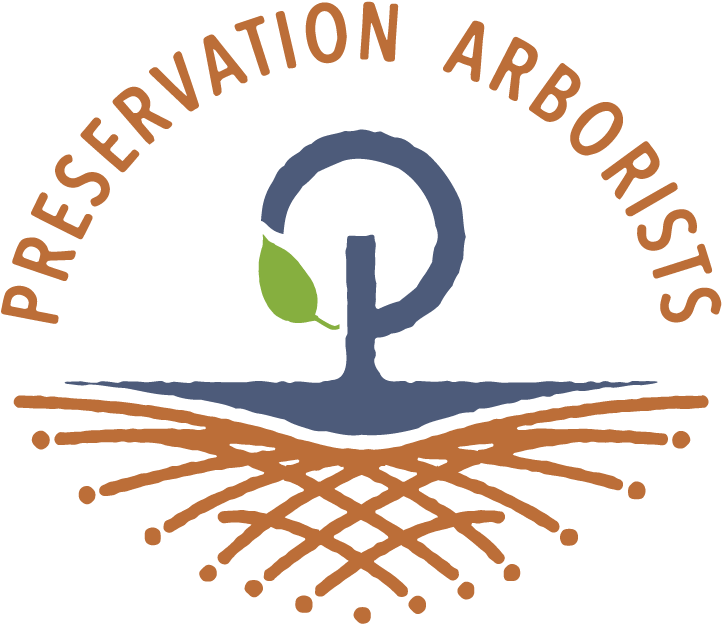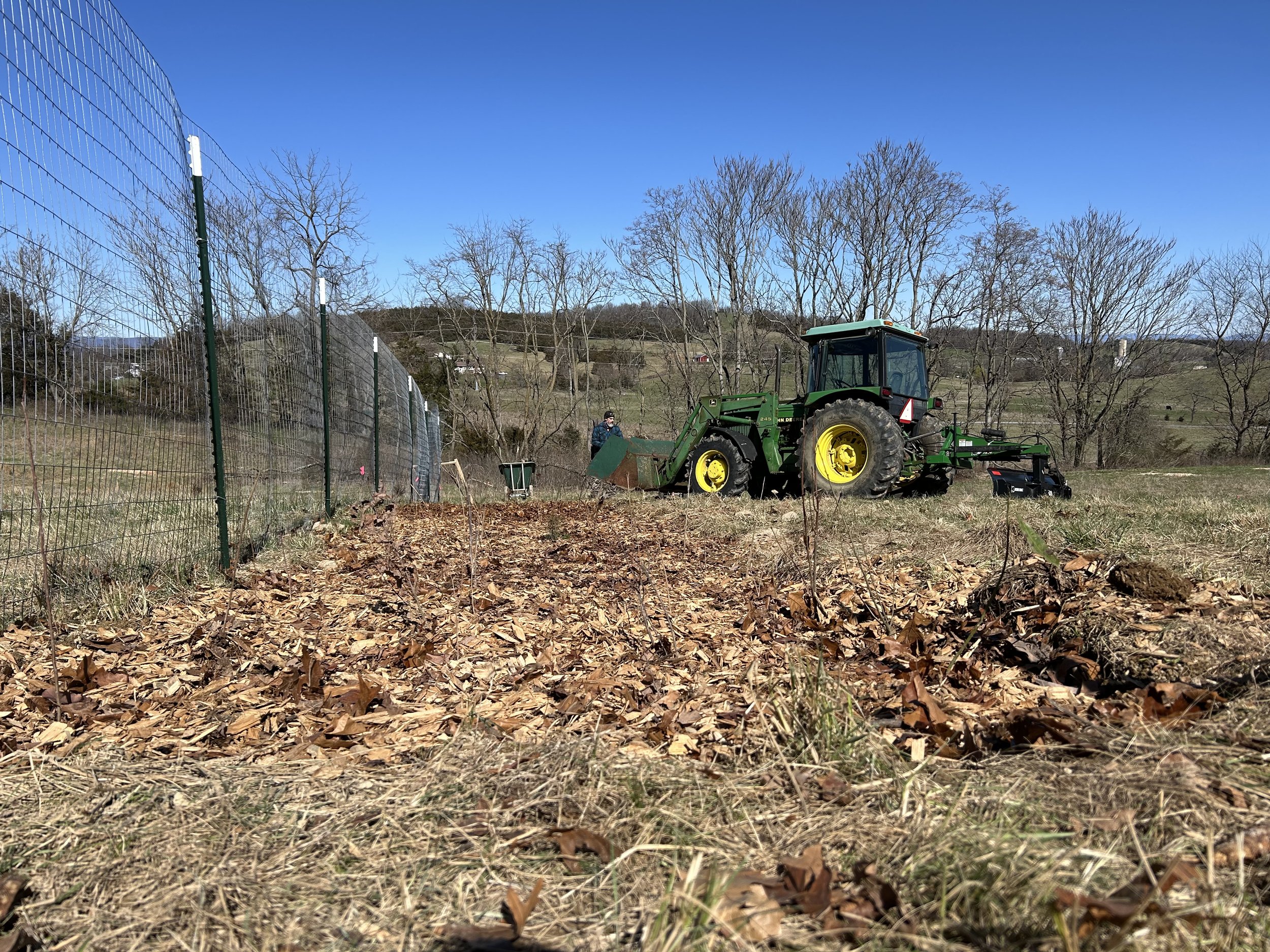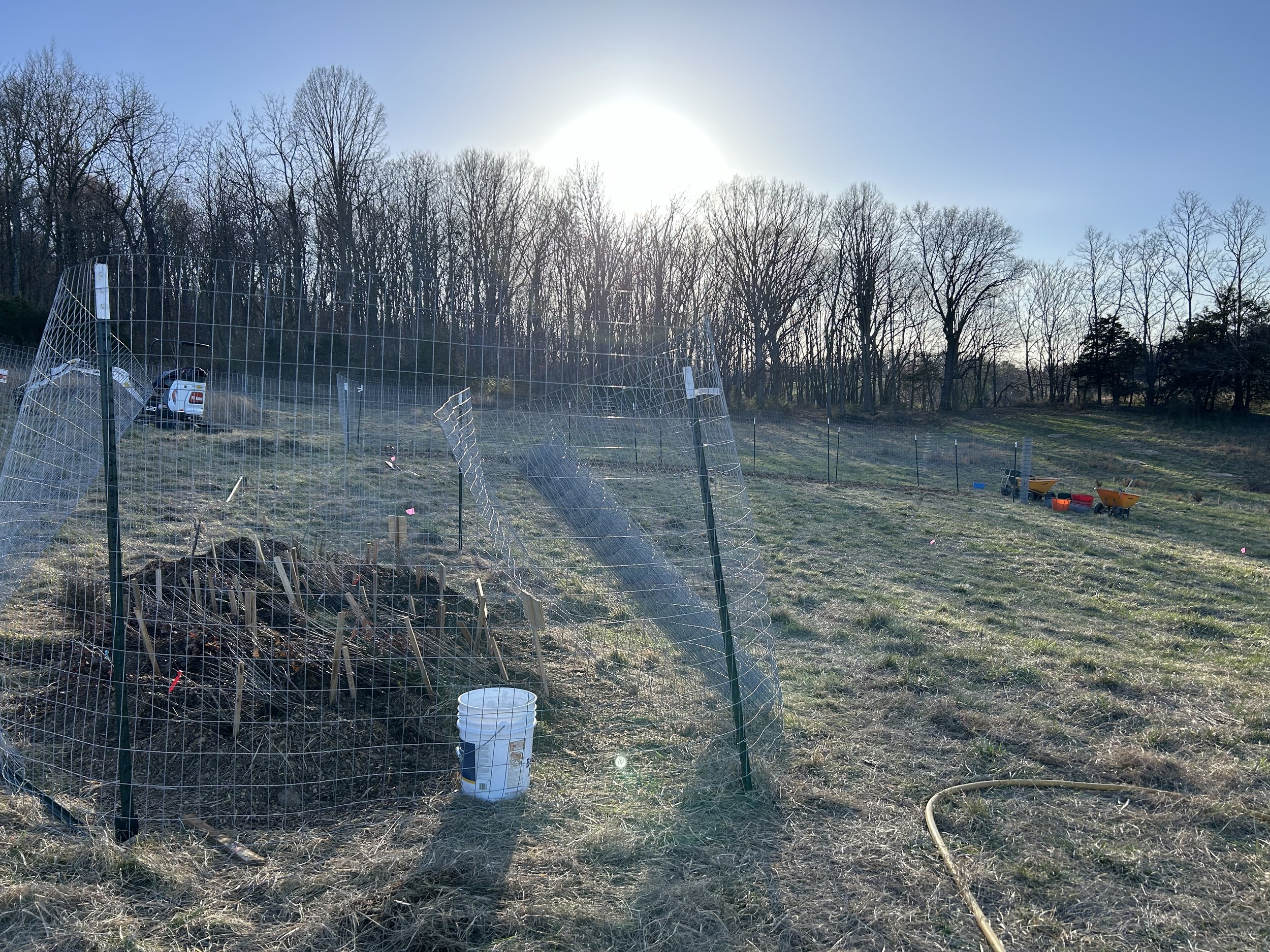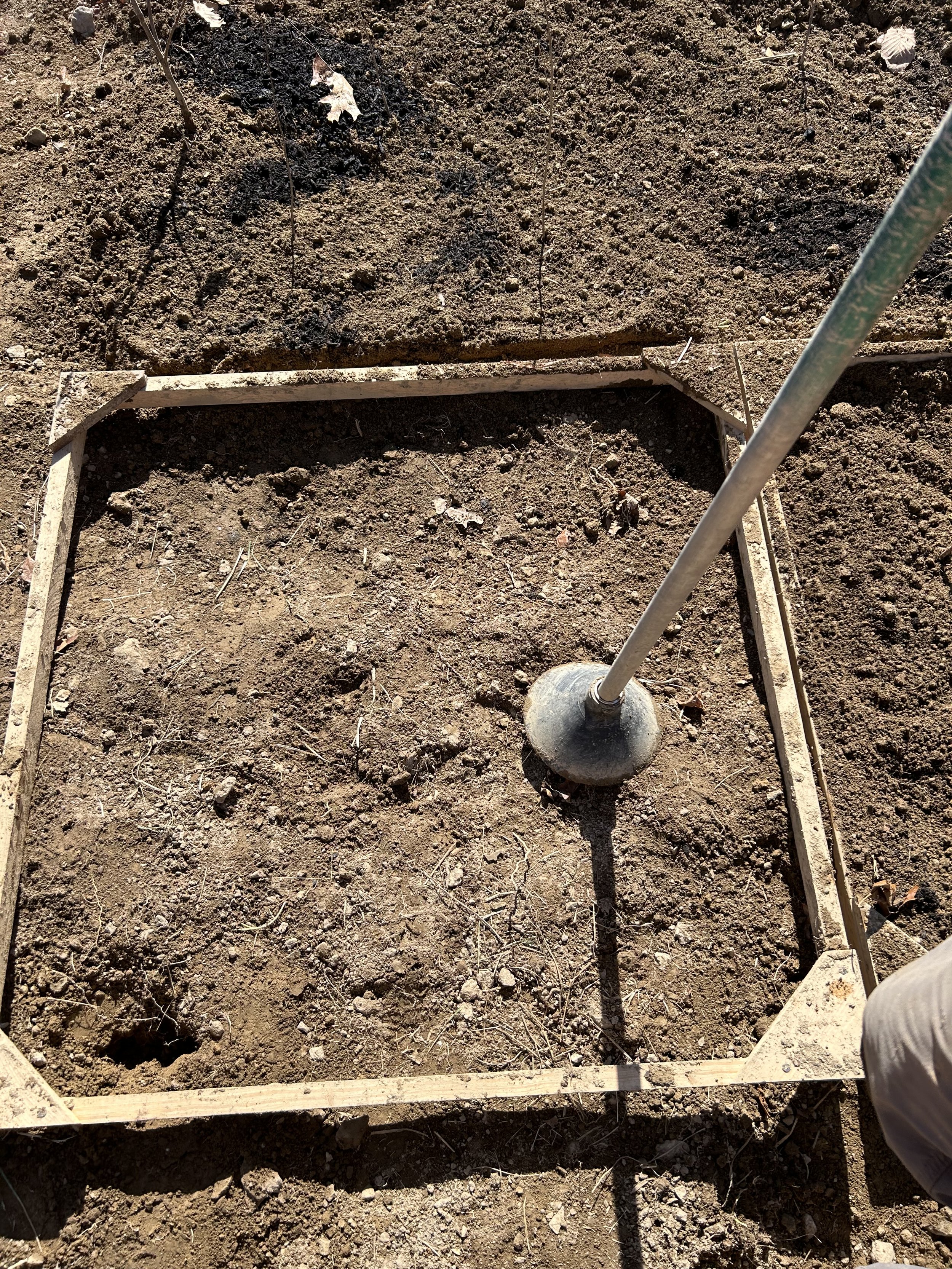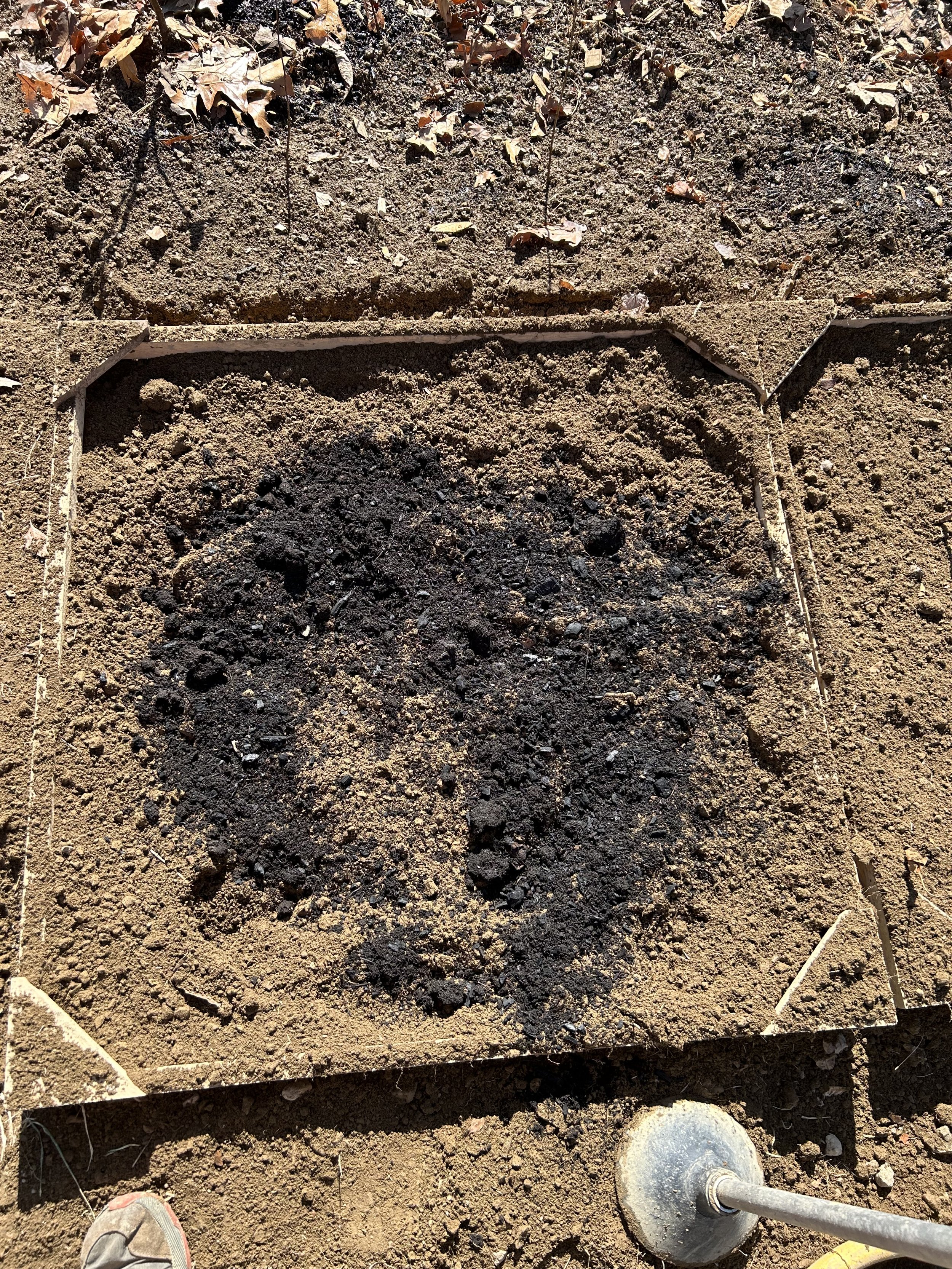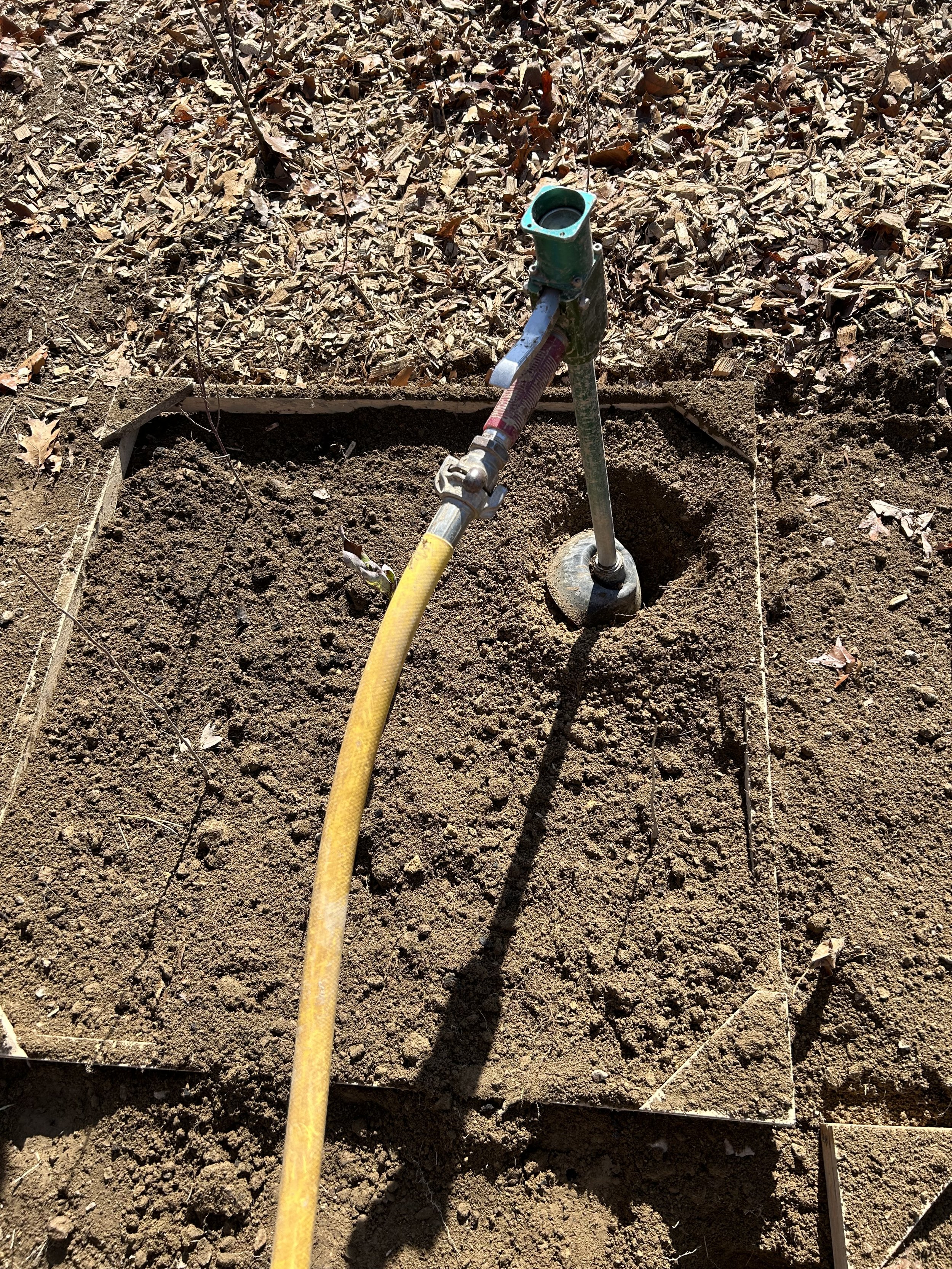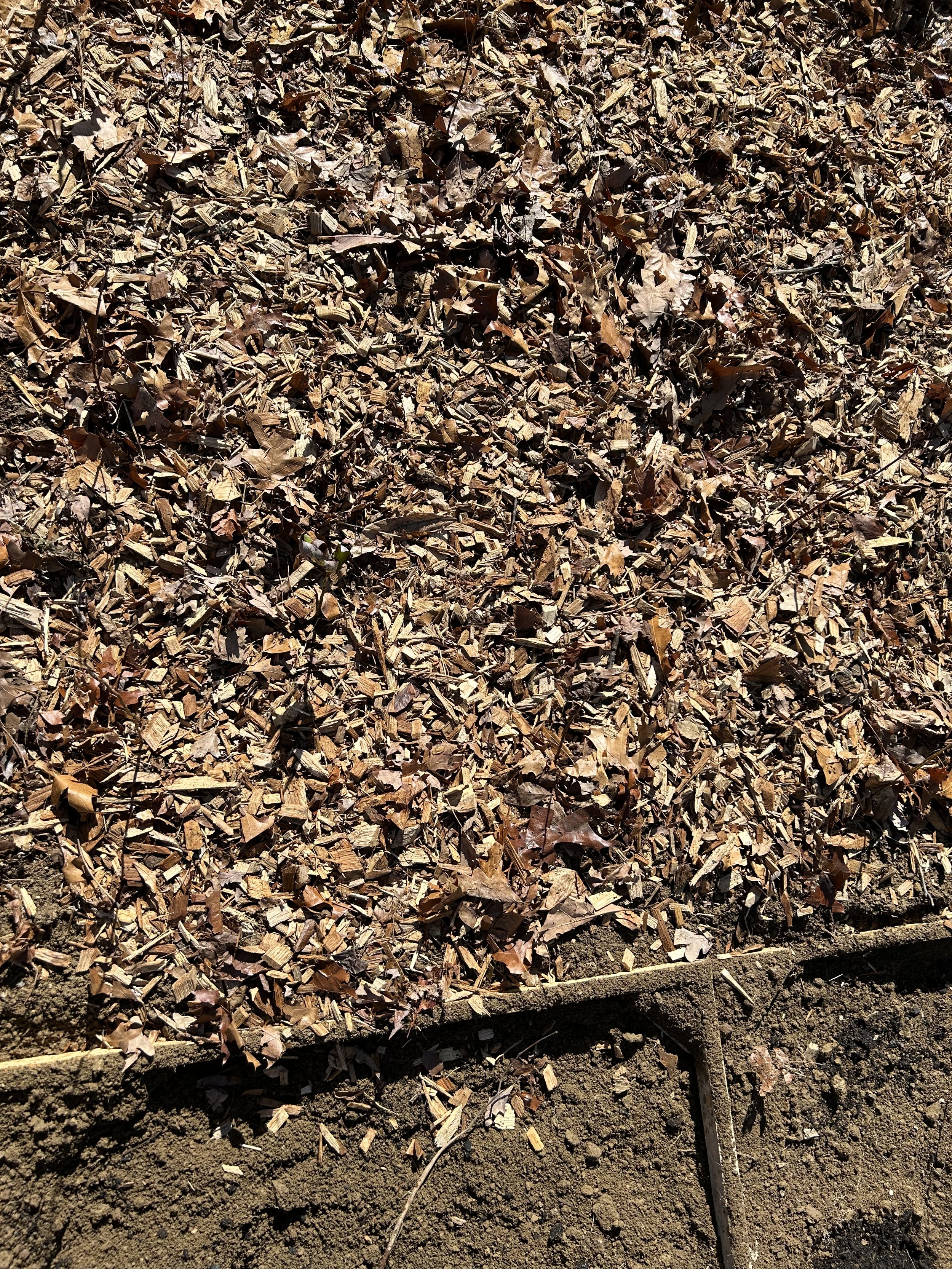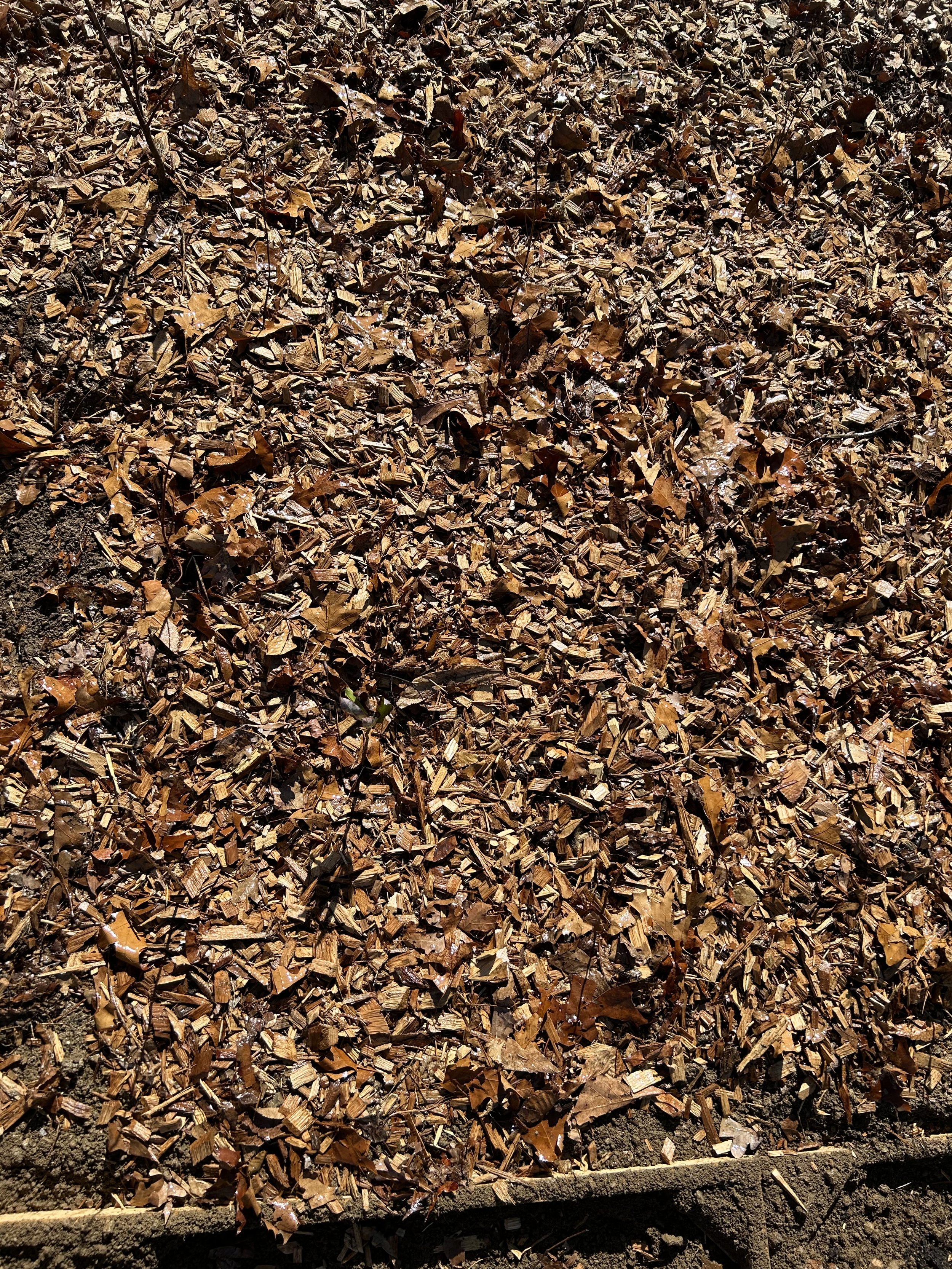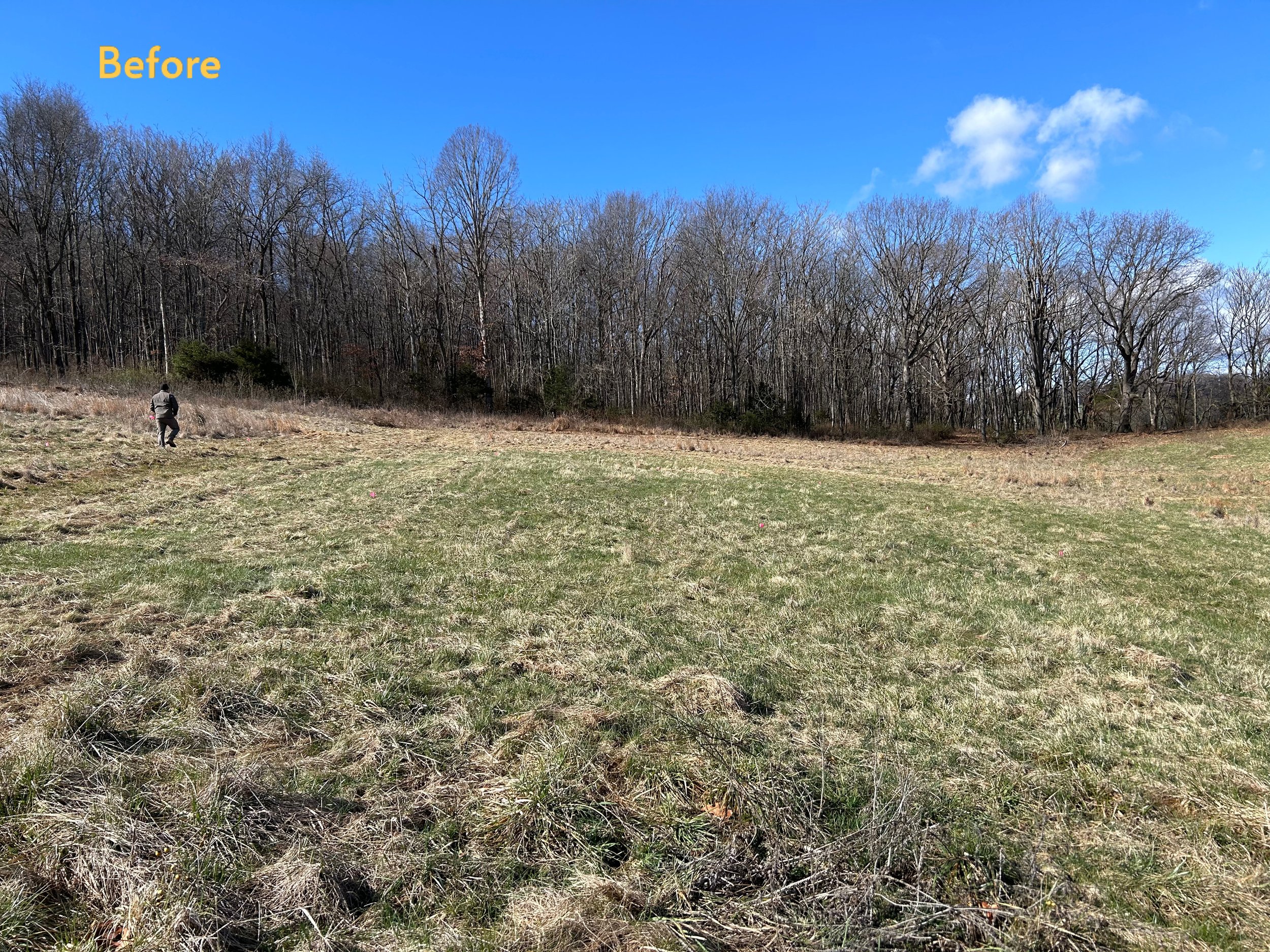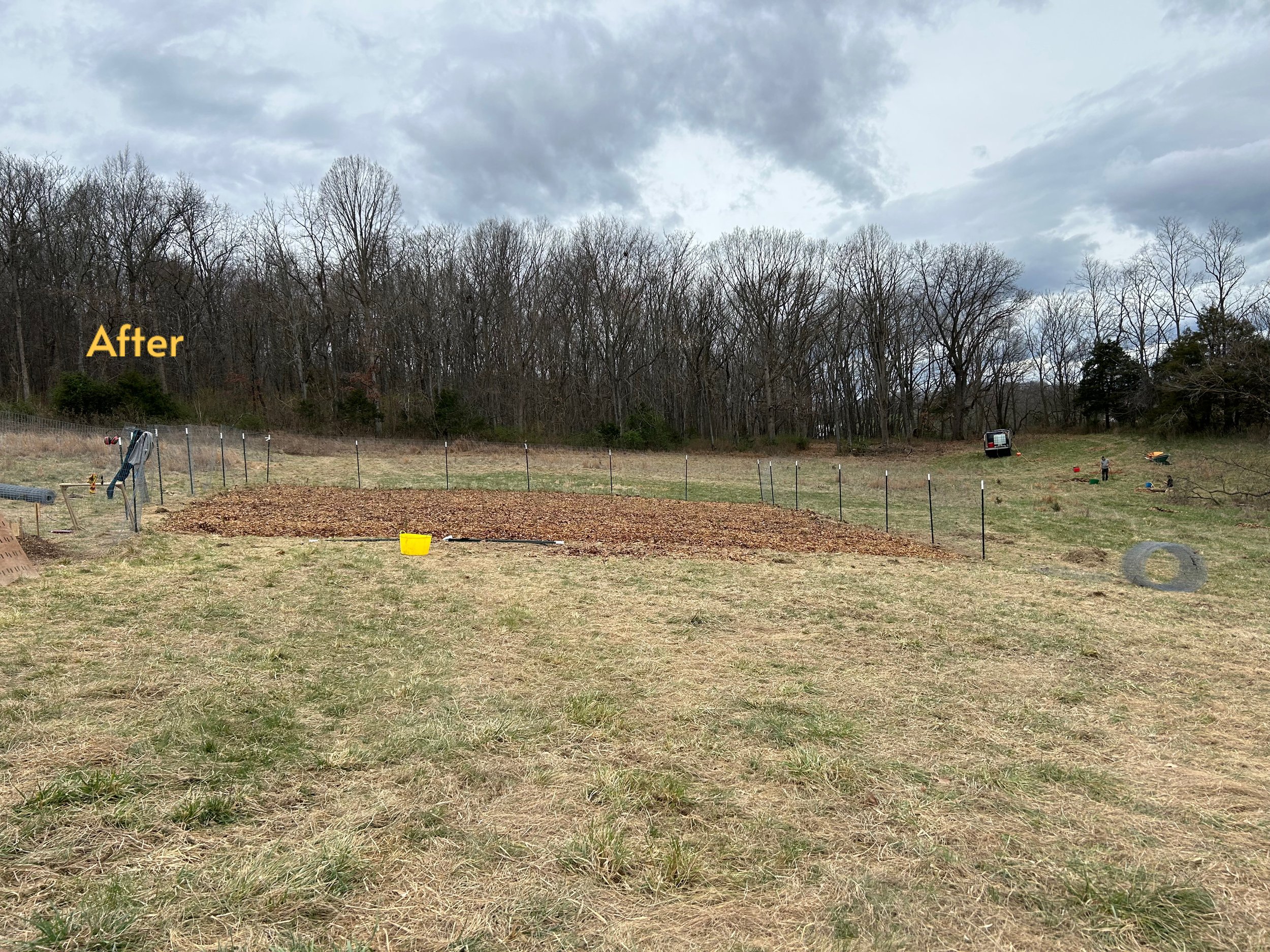Planting a 1,165-Tree Tiny Forest
Site: a rocky hay field in VA. With lots of deer (thus the fence).
Goal: plant 1,156 trees, densely packed, according to the Miyawaki method.
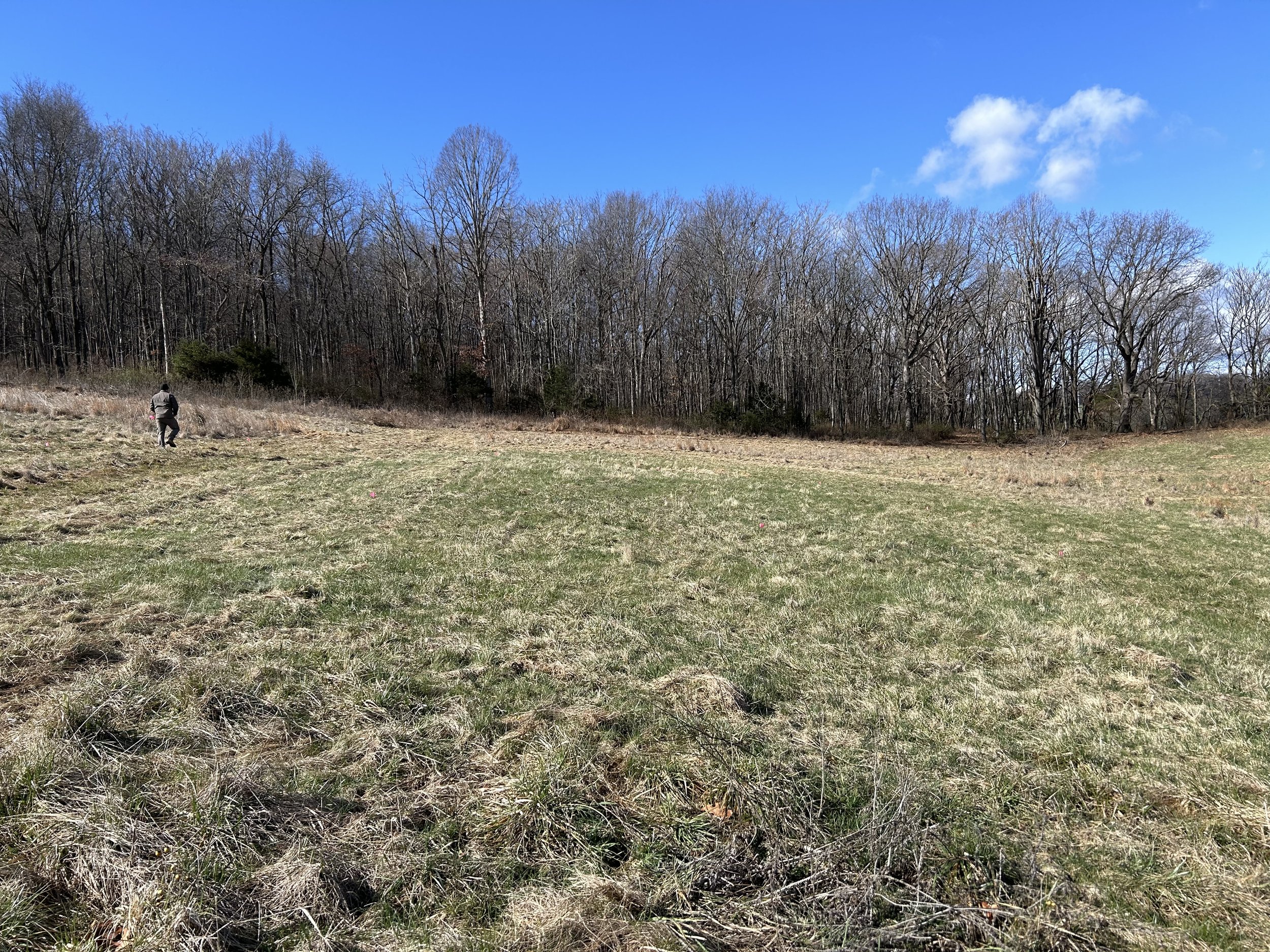
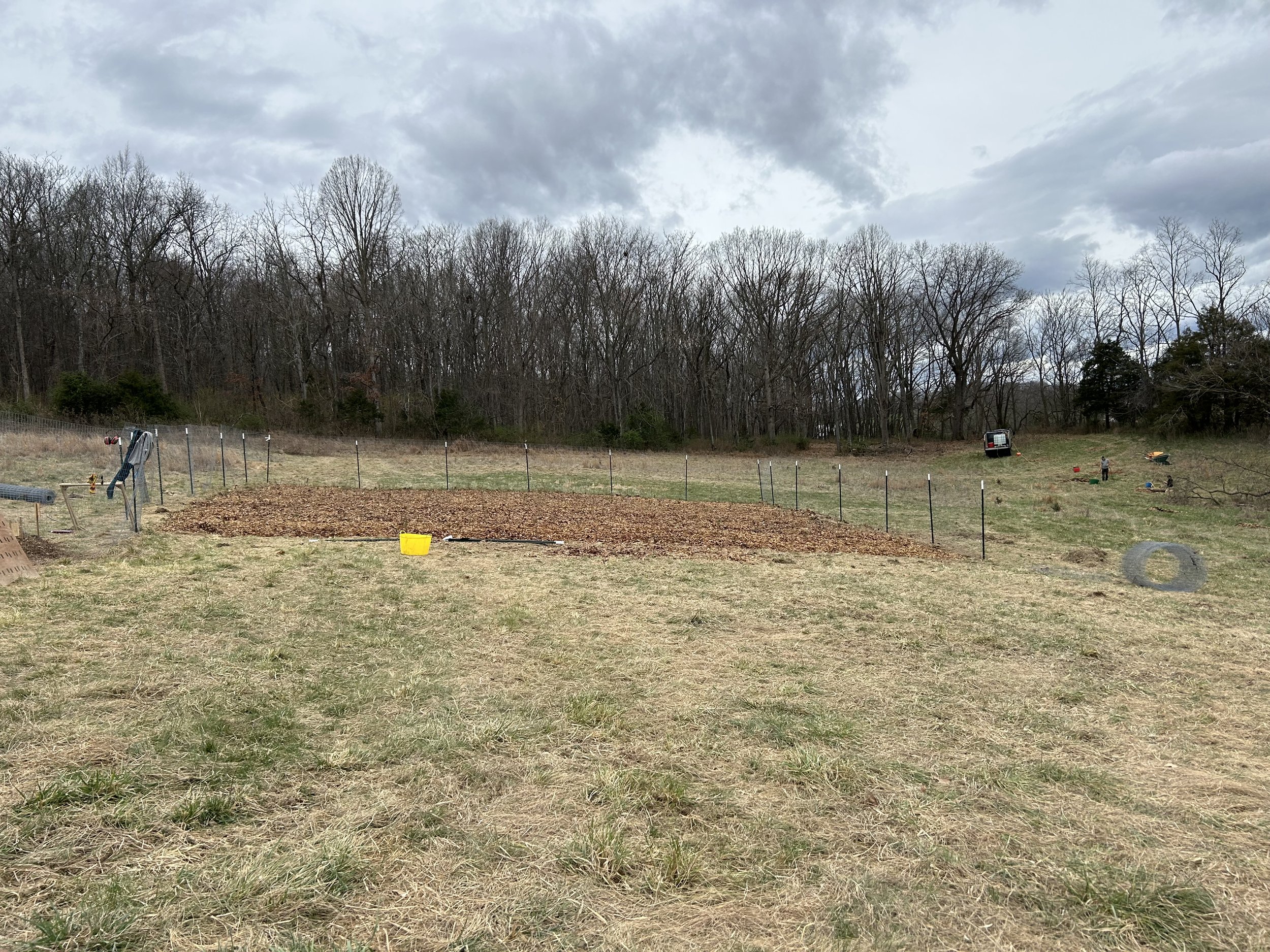

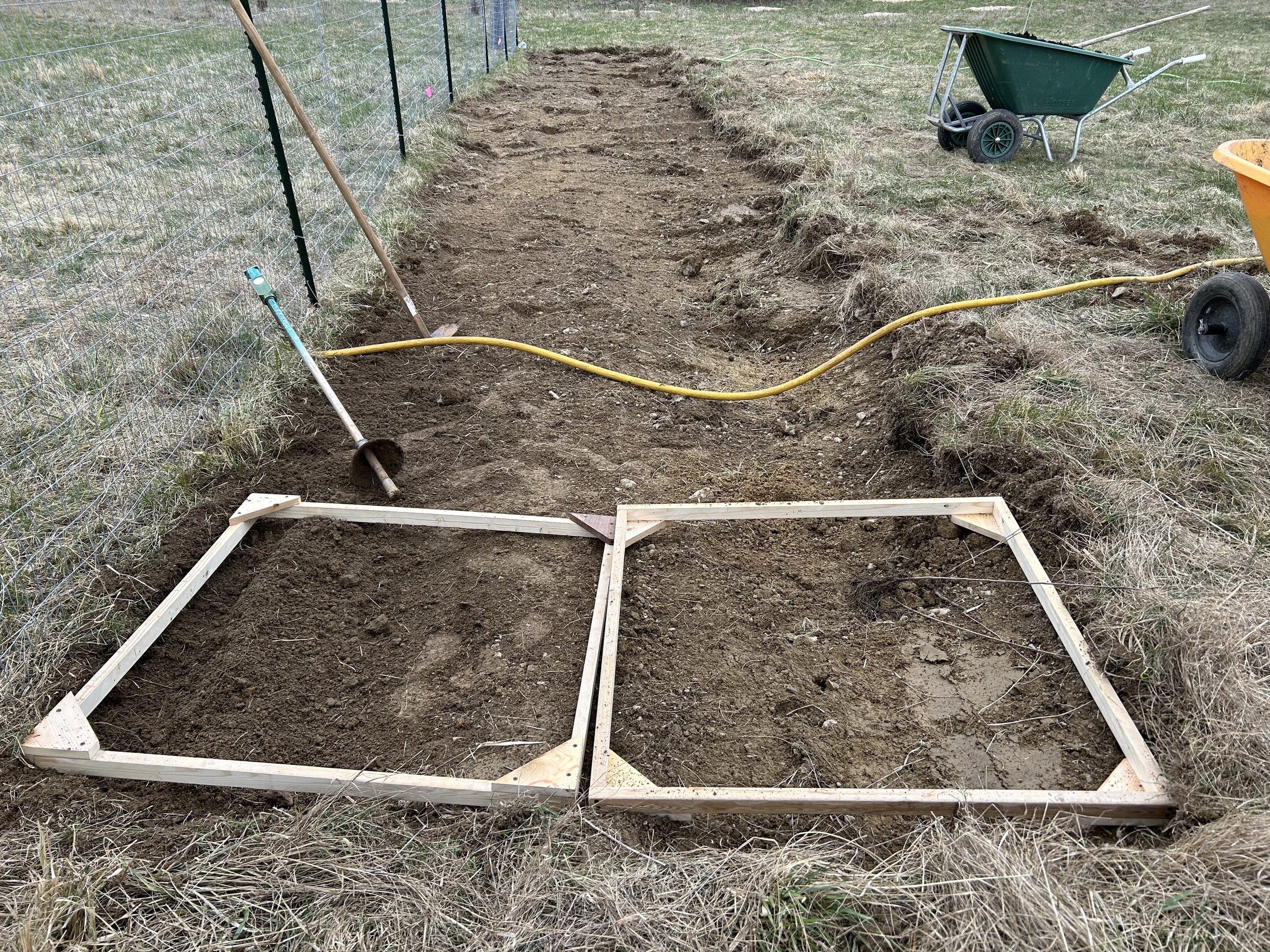
First, we began removing grass and working with the rocky soil. An intensive process for humans and machines.
Planting trees in grass is a pain in the butt. We chose to take out the non-woody competition so that the soil turns to a forest-like, fungally dominant environment for the trees, sooner.
We worked closely with the soil as we planted the saplings — using our friend the Air Knife to break up compaction and refresh the soil with air. Technically, we were tilling. Typically, I am in the no-till camp of regenerative agriculture. In this case, I believe the benefits outweighed the costs because of the carbon we were putting into the ground, and also the quality with which we were able to plant each tree in a fluffy substrate. Conclusion: don’t till to plant soybeans, but a forest? Sure. I think so.
Next, we added a fungally-dominant compost mixed with biochar to the air-knifed soil. All the while picking out rocks — some bigger than our fists.
This field belongs to my mom and dad, and my dad, passionate about the Miyawaki method, made the meter-square wooden frames shown here that we used to create the tiny forest template.
Inside each meter-square frame, we planted a large tree, a medium tree, a small tree, and a shrub at random. Dr. Miyawaki said to plant the trees like a child, without any pattern. We did our best. We had 45 different species to choose from. My mother graciously made wooden labels for us to keep all the saplings straight in their temporary mulch-pile home.
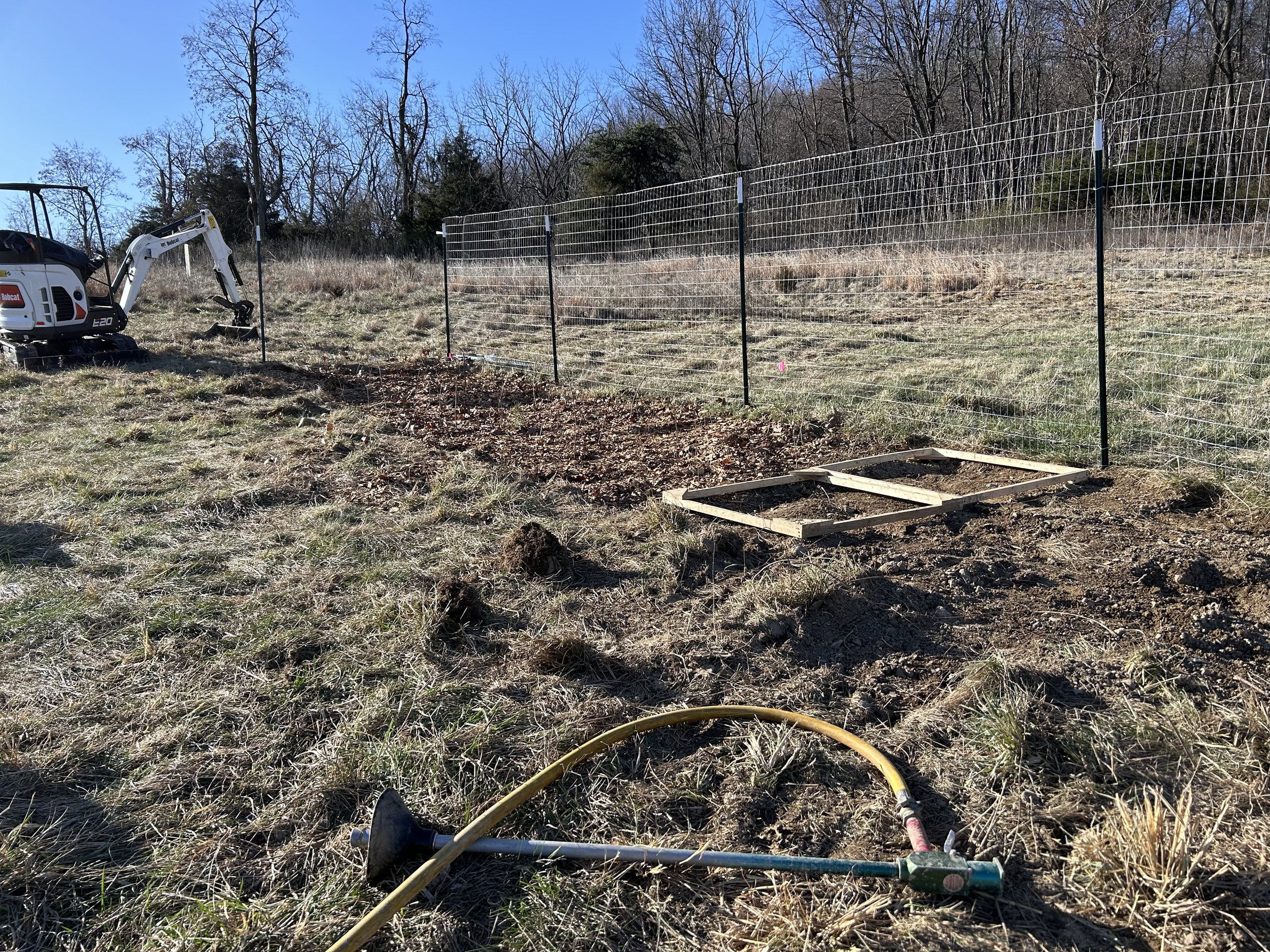


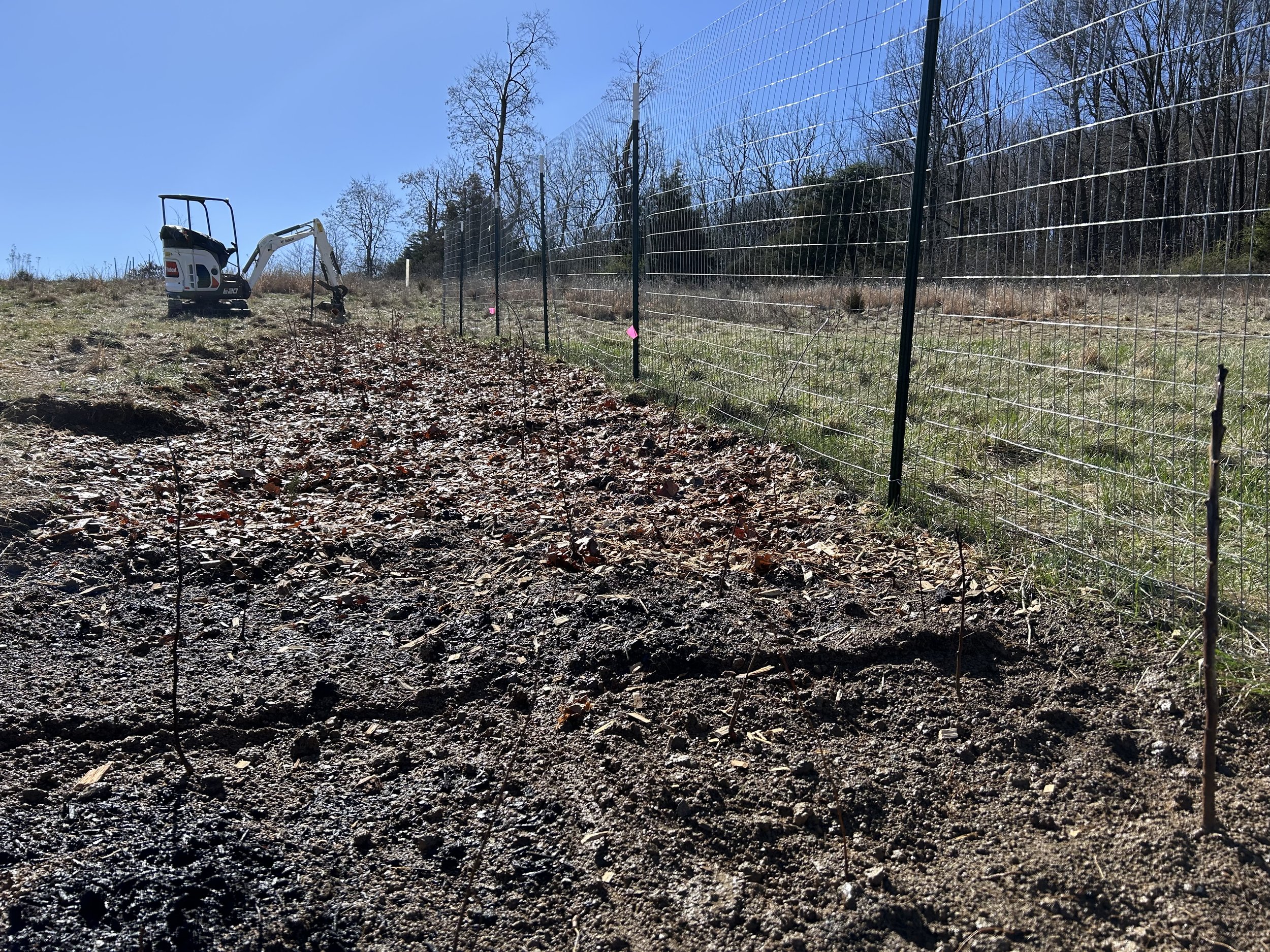
See the long root of the sapling traveling in its custom-made trench in the second image, above? Typically, trees are plopped with their roots gathered and compressed into a hole. With the Air Knife, we were able to break up the soil around each tree so that we could easily lay out each sapling’s roots in planting. This takes longer than the typical mass-planting methods, but with our slower more intentional method, roots are planted with a mind toward the way they were growing before they were transplanted. Not shoved into a hole and stomped on.
We have an atypically high success rate with trees we have planted in the past four years. I believe this is partly because of our ability to spread each root out away from the tree to mirror how they grow in nature. We unscroll and spread the tree roots in planting with consideration for the layers and levels the sapling shows us. According to the tree’s root architecture, we splay some roots lower in depth, some more toward the surface — none circling the trunk or each other.
The sapling shows us how it would like to be planted. After doing one or two (or 800), the planter starts to realize that trees were never meant to be moved. It is impossible to plant a tree the exact same way that it was growing. Planting a tree is not easy. But we can do our best.
After vertical mulching (a method of adding air and carbon down to 40” in the soil), we water, and then mulch. And then water again. Now the field is a baby forest. We can’t wait to see it grow and leaf and will post updates in the future.
Below, a closer look at our patient process.
Pippa, Pippa’s ball, Luke, Jamie, and me next to my parent’s baby forest. A big thank you to my mom and dad for their hospitality and openness to trying something new. And, of course, for their care of our planet’s future.
